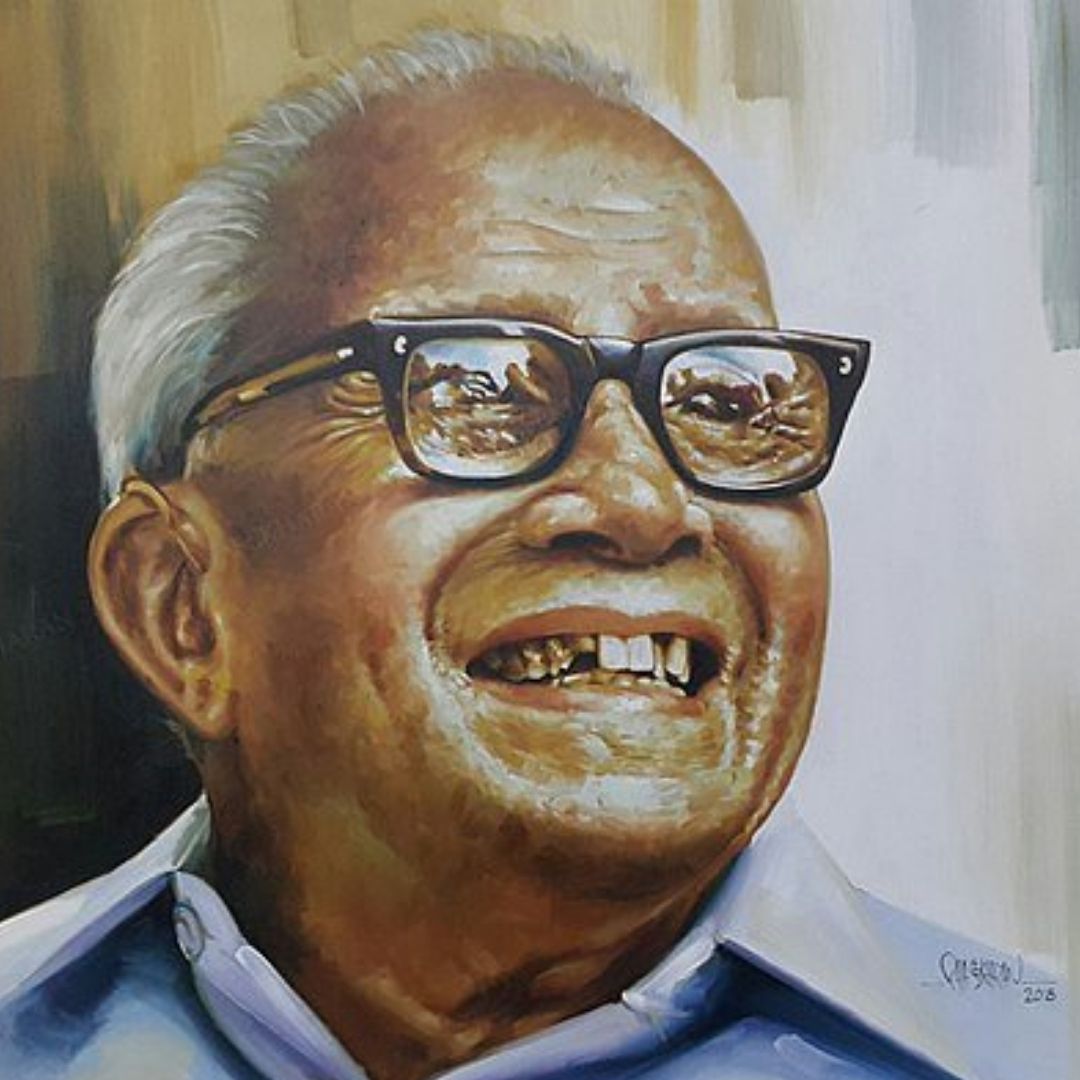
Image Credits: Wikimedia
Kerala Piravi: Know About EMS Namboodiripad's Historical Reforms That Made Kerala What It Is Today
Writer: Akanksha Saxena
I am a budding journalist who loves to write stories that have the ability to connect with people.
Kerala, 1 Nov 2021 9:06 AM GMT
Editor : Snehadri Sarkar |
While he is a massive sports fanatic, his interest also lies in mainstream news and nitpicking trending and less talked about everyday issues.
Creatives : Akanksha Saxena
I am a budding journalist who loves to write stories that have the ability to connect with people.
As we look back at Kerala's State Formation Day in 1956, here is a look at the state's first chief minister, EMS Namboodiripad, and the reforms he brought about that defined what we know as the 'Kerala Model.'
November 1 is an important day for five states in India. On this day, Kerala, Karnataka, Chhattisgarh, Madhya Pradesh, Haryana and Andhra Pradesh, became states by merging different provinces. All of them created history in 1956, nine years after the country got its independence from the ruthless British Raj. Each of them represents the country's diversity.
With varying demographics and languages, their interesting history and culture are what makes them stand out from the rest, yet come together to make India what it is today.
An example of this is Kerala. The States Reorganisation Act in 1956 merged Malabar, Travancore-Cochin, Kasaragod and South Kanara to form the state. After its conception, elections were held in 1957 where a Communist government came to power in the state, with EMS Namboodiripad as Kerala's first Chief Minister. The results then scripted history as he became the first elected Communist leader in the country.
On the occasion of 'Kerala Piravi', let us take a look at the reforms brought about by Namboodiripad's government that have shaped the state to what it is today.
Pathbreaking Agrarian And EducationReforms
When the country was under British rule, it had a semi-feudal agrarian system where a handful of landlords owned land. When EM Sankaran Namboodiripad's government came to power in 1957, they immediately brought about a Land Reform Bill to bring in some radical changes. This was introduced by K R Gowri Amma, the state's first revenue minister, also making her Kerala's first female minister. The main aim of the bill was to provide security and give rights to the tenants, as well as, put a cap on the number of lands an owner could possess.
In 1958, the government passed the Agrarian Reforms Bill, which sought to confer ownership rights to the cultivators and to the agricultural labourers who lived on the land they worked on. Before this, these lands were under a landlord and were left at their mercy. Known as 'Kudikidappukar', they were considered slaves. With this, Namboodiripad aimed to address the political and social inequalities that existed as a result of the archaic feudal system.
The government also introduced the Education Bill in the same year, by the then education minister Joseph Mundasseri. This aimed towards bringing about standardised syllabi across all educational institutions in the state and working on the pay structure as well.
Uproar In The State
According to Wikipedia, these reforms sought radical changes in the state, that no one was prepared for. The Land Reforms Bill caused a massive uproar in the landlord classes not just in the state, but around the country as well. Some provisions in these bills did not go down well with many influential and interest groups in the state, like the Syrian Christians and the Nairs.
An anti-communist movement called 'Liberation Struggle' or 'Vimochana Samaram' was spearheaded by these groups to revolt against the Namboodiripad government. In 1959, Kerala witnessed statewide mass protests against the Communist regime. With the involvement of the Indian National Government (INC) in the agitation, Prime Minister Jawaharlal Nehru was under pressure to dismiss them. Initially hesitant, the centre brought about President's Rule in Kerala under Article 356 of the Indian Constitution.
Despite these reforms being 'controversial' in nature, they did address the inequalities Kerala had in the pre-independence era. EMS Namboodiripad's valiant efforts are still remembered by the state even today.
Also Read: How 'Indian Coffee House' Became A Prominent Cultural Hub In The Country
 All section
All section














